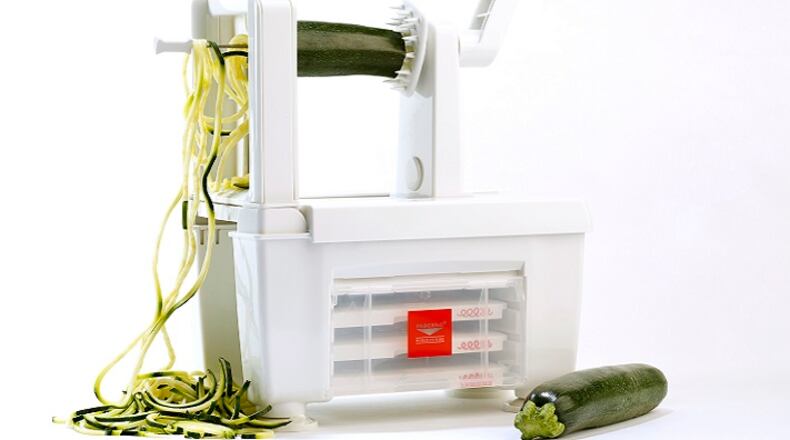How to boost your intake? Consider hiding them in your favorite foods. The latest issue of Environmental Nutrition offers a few easy fixes:
--Add grated carrots to pancake batter. When paired with spices like cinnamon and a touch of maple syrup, the pancakes taste like a stack of carrot cake.
--Pureed pumpkin or butternut squash can add natural sweetness to a pot of steamy oats and make it even creamier.
--Add a touch of sweetness to yogurt with ready-to-go chia fruit jam. Blend together 2 cups berries or cherries with 3 tablespoons chia seeds; place in a bowl and set aside for 2 hours to thicken. Stir jam into bowls of yogurt.
--Use smashed avocado instead of mayo on sandwiches to boost the fiber and vitamins.
--Beef up burgers or meatloaf by mixing in sauteed mushrooms, grated vegetables like zucchini and beets, chopped spinach or some diced, sundried tomatoes. You can also add dried fruit, such as cherries.
--To veggie or grain-based salads, add berries, sliced apples or orange segments.
--Swap out starchy pasta for noodles. An inexpensive spiralizer can transform sweet potatoes, zucchini or butternut squash into low-calorie, nutrient-packed veggie noodles.
--Pack a smoothie with leafy greens like spinach and baby kale along with frozen berries, tangy yogurt and nut butters.
--To make brownies and chocolate cake less of a guilty pleasure, incorporate beets, sweet potatoes or even an avocado puree. It's the same idea behind adding pureed bananas or applesauce, and reduces fat and sugar.
Q and A
Q: How long can you store tea before it starts to lose its taste and nutritional benefits?
A: Black, oolong, green and white teas all come from the same plant, Camellia sinensis. They differ in how the leaves are processed after harvesting and before drying. All will eventually lose their flavor, and the phytochemicals (primarily flavonoids) they contain will degrade. Dried tea leaves that are kept dry will not spoil, however, and as long as they are stored away from heat, water, light and air, the flavor and phytochemical content can be maintained for up to two years. The more fermented and intact the dried leaves are, the longer they will last. Black tea leaves are more fermented than green or white, and oolong is somewhere in between. Measures of intactness vary from leaf, to broken leaf, to fannings and dust. Fannings are small pieces of leaves, while dust is the tiny particles left at the bottom of the barrel. Tea bags most often contain fannings and dust because they brew quickly. Some tea bags do contain whole leaves, but they tend to be larger, to allow the leaves room to expand. To keep your tea flavorful and flavonoid-rich for one to two years, transfer your tea bags or leaves to an airtight container as soon as possible after purchase, and store it away from the stove and sink.
Information courtesy of Tufts University Health & Wellness Letter.
Recipe
These ranch turkey burgers, from Southern Living magazine, are a great alternative to a hamburger. Reduced-fat sour cream, mayo and buttermilk keep the patties moist.
RANCH TURKEY BURGERS
Servings: 4
1 1/4 pound ground turkey
1/2 teaspoon garlic powder
1/2 teaspoon onion powder
1/2 teaspoon dried dill
1/4 cup reduced-fat sour cream, divided
1/4 cup canola mayonnaise, divided
3 tablespoons reduced-fat buttermilk, divided
3/4 teaspoon kosher salt, divided
3/4 teaspoon black pepper, divided
1 tablespoons olive oil
1 teaspoon apple cider vinegar
4 hamburger buns, toasted
Romaine lettuce, heart leaves, tomato slices, red onion slices
Combine turkey, garlic powder, onion powder, dill and 1 tablespoon each of the sour cream, mayonnaise and buttermilk in a medium bowl. Divide turkey mixture into 4 (5-ounce) portions; shape into 1-inch-thick patties. Sprinkle patties with 1/2 teaspoon each of salt and pepper. Heat oil in a large nonstick skillet over medium-high or turn grill to medium-high heat. Add burgers to skillet or grill; cover and cook until bottoms are browned, about 4 minutes. Turn burgers; cover and cook until 165 degrees, about 3 minutes. Stir together apple cider vinegar and remaining 3 tablespoons each of sour cream and mayonnaise, 2 tablespoons buttermilk and 1/4 teaspoon salt and pepper in a small bowl. Spread about 1 tablespoon of the mixture on each bun half. Place 1 patty on each bottom half of bun; top with lettuce, tomato and red onion slices.
Per serving: 484 calories, 38 g protein, 26 g carbohydrate, 25 g fat, 2 g fiber.
About the Author

